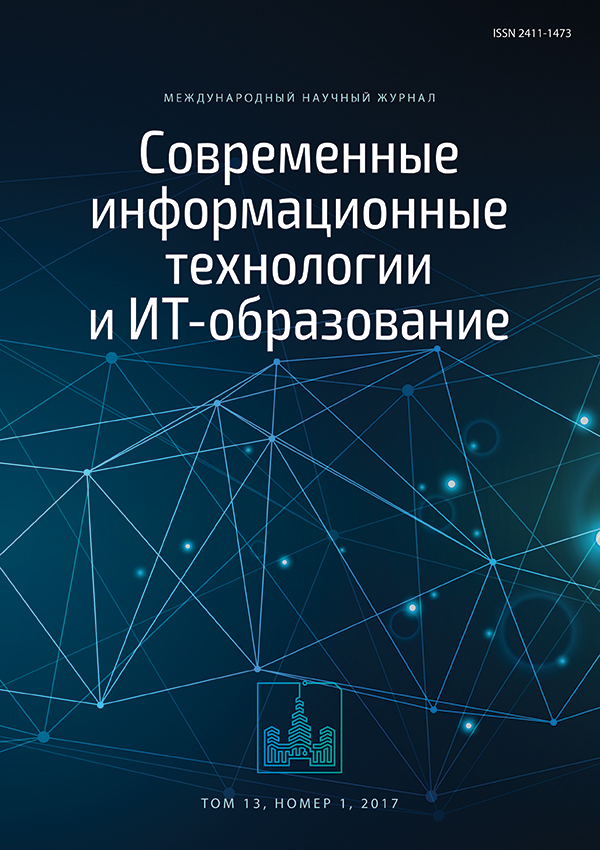ИНФОРМАЦИОННАЯ РЕВОЛЮЦИЯ: СРЕДСТВА АНАЛИЗА И ПРОГНОЗИРОВАНИЯ
Инструменты прикладного анализа информационной революции и некоторые результаты их использования
Аннотация
В статье рассматривается применение традиционных инструментов анализа технологических революций: технологии общего назначения, 4-круговой модели инноваций, S-образной кривой к анализу информационной революции, разворачивающейся в настоящее время. Демонстрируется объясняющая и прогностическая сила этих аналитических инструментов для исследования данной проблемы. В частности, демонстрируются требования к промышленной политике, положительно влияющие на информационную революцию.
Литература
2. Bresnahan, Timothy F. and Shane Greenstein (2001), The economic contribution of information technology: Towards comparative and user studies // Journal of Evolutionary Economics, vol.11, pp.95-118.
3. Bresnahan, Timothy F. and Trajtenberg Manuel (1989), General Purpose Technologies and Aggregate Growth // Working Paper, Department of Economics, Stanford University, January 1989
4. David, P. (1990), The Dynamo and the Computer: An Historical Perspective on the Modern Productivity Paradox // The American Economic Review, Vol. 80, No. 2, Papers and Proceedings of the Hundred and Second Annual Meeting of the American Economic Association (May, 1990), pp.355-361.
5. David, P., G.Wright (2003) General Purpose Technologies and Surges in Productivity: Historical Reflections on the Future of the ICT Revolution // in The Economic Future in Historical Perspective, ed. P.David and M. Thomas. Oxford University Press.
6. Davis, Gerald (2015), What Might Replace the Modern Corporation? Uberization and the Web Page Enterprise // Seattle University Law Review, Vol. 39, pp.501-515.
7. Gartner, Inc (2016a), Gartner Hype Cycle for Emerging Technologies, 2016 // http://www.gartner.com/smarterwithgartner/3-trends-appear-in-the-gartner-hype-cycle-for-emerging-technologies-2016/ (data obrashhenija 22.02.2017).
8. Gartner, Inc (2016b), Top 10 Strategic Technology Trends 2017 // http://www.gartner.com/smarterwithgartner/gartners-top-10-technology-trends-2017/ (data obrashhenija 26.02.2017).
9. Kaplan, A.M., M.Haenlein (2016), Higher education and the digital revolution: About MOOCs, SPOCs, social media, and the Cookie Monster // Business Horizons, Vol. 59, pp. 441—450.
10. Lee, A. (2013), Welcome to the unicorn club: learning from billion-dollar start-ups URL: http://techcrunch.com/2013/11/02/welcome-to-the-unicorn-club/ (data obrashhenija 25.02.2017).
11. Lipsey R.G., Carlaw K.I., Bekar C.T., Economic Transformations: General Purpose Technologies and Long Term Economic Growth // Oxford University Press, 2005, 618 p.
12. Scheer, A.-W. (2001), Start-Ups are Easy, But… // Springer Science and Business Media, 2001, 220 p.
13. Smith D. (2013) Power-by-the-hour: the role of technology in reshaping business strategy at Rolls-Royce // Technology Analysis & Strategic Management, Vol. 25, No. 8, pp.987–1007.
14. Varian, H. (2014), Beyond Big Data // Business Economics 49(1): 27–31.
15. Zuboff, Sh. (2015), Big other: surveillance capitalism and the prospects of an information civilization // Journal of Information Technology 30, 75–89.
16. Grjehjem L. Smozhet li Rossija konkurirovat'? M.: Mann, Ivanov i Ferber, 2014, 288 s.
17. Lem S. Summa tehnologii // M.: Mir, 1968.
18. Osterval'der A., I.Pin'e Postroenie biznes-modelej: Nastol'naja kniga stratega i novatora. — M.: Al'pina Pablisher, 2012. — 288 s.
19. RIA Novosti. Putin poruchil pravitel'stvu razrabotat' programmu "Cifrovaja jekonomika», 06.12.2016 // https://ria.ru/economy/20161206/1482988837.html, dostup 25 fevralja 2017 g.
20. Foster R. Obnovlenie proizvodstva: atakujushhie vyigryvajut // M.: Progress, 1987. — 272 s.

Это произведение доступно по лицензии Creative Commons «Attribution» («Атрибуция») 4.0 Всемирная.
Редакционная политика журнала основывается на традиционных этических принципах российской научной периодики и строится с учетом этических норм работы редакторов и издателей, закрепленных в Кодексе поведения и руководящих принципах наилучшей практики для редактора журнала (Code of Conduct and Best Practice Guidelines for Journal Editors) и Кодексе поведения для издателя журнала (Code of Conduct for Journal Publishers), разработанных Комитетом по публикационной этике - Committee on Publication Ethics (COPE). В процессе издательской деятельности редколлегия журнала руководствуется международными правилами охраны авторского права, нормами действующего законодательства РФ, международными издательскими стандартами и обязательной ссылке на первоисточник.
Журнал позволяет авторам сохранять авторское право без ограничений. Журнал позволяет авторам сохранить права на публикацию без ограничений.
Издательская политика в области авторского права и архивирования определяются «зеленым цветом» в базе данных SHERPA/RoMEO.
Все статьи распространяются на условиях лицензии Creative Commons «Attribution» («Атрибуция») 4.0 Всемирная, которая позволяет другим использовать, распространять, дополнять эту работу с обязательной ссылкой на оригинальную работу и публикацию в этом журналe.













